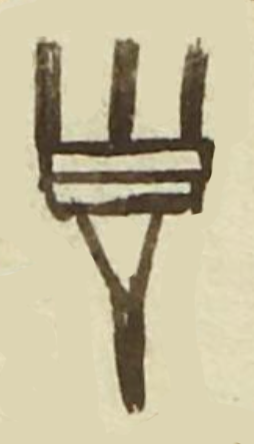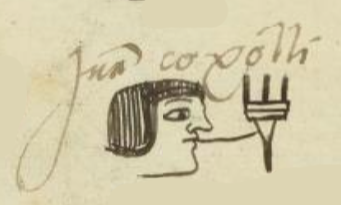Coxoli (MH716r)
This black-line drawing of the simplex glyph for the personal name, Coxoli (perhaps referring to “Pheasant,” which is coxolitli, or perhaps a fan with pheasant feathers), is attested here as a man’s name. The glyph shows a frontal view of what appears to be a feather fan. If the translation is correct, then the feathers come from a pheasant (coxolitli) or the fan of feathers was perceived to resemble a pheasant. The fan shows two horizontal elements and perhaps three feathers rising above these elements. The handle bifurcates below the horizontal element, creating a triangular shape.
Stephanie Wood
This collection includes at least one other example of this type of device, possibly held in the hand while dancing.
Stephanie Wood
Juā coxolli
Juan Coxoli
Stephanie Wood
1560
Jeff Haskett-Wood
pájaros, plumas, feathers, nombres de hombres

coxoli(tli), pheasant, https://nahuatl.wired-humanities.org/content/coxolitli
Faisan
Stephanie Wood
Matrícula de Huexotzinco, folio 716r, World Digital Library, https://www.loc.gov/resource/gdcwdl.wdl_15282/?sp=510&st=image
This manuscript is hosted by the Library of Congress and the World Digital Library; used here with the Creative Commons, “Attribution-NonCommercial-ShareAlike 3.0 License” (CC-BY-NC-SAq 3.0).



